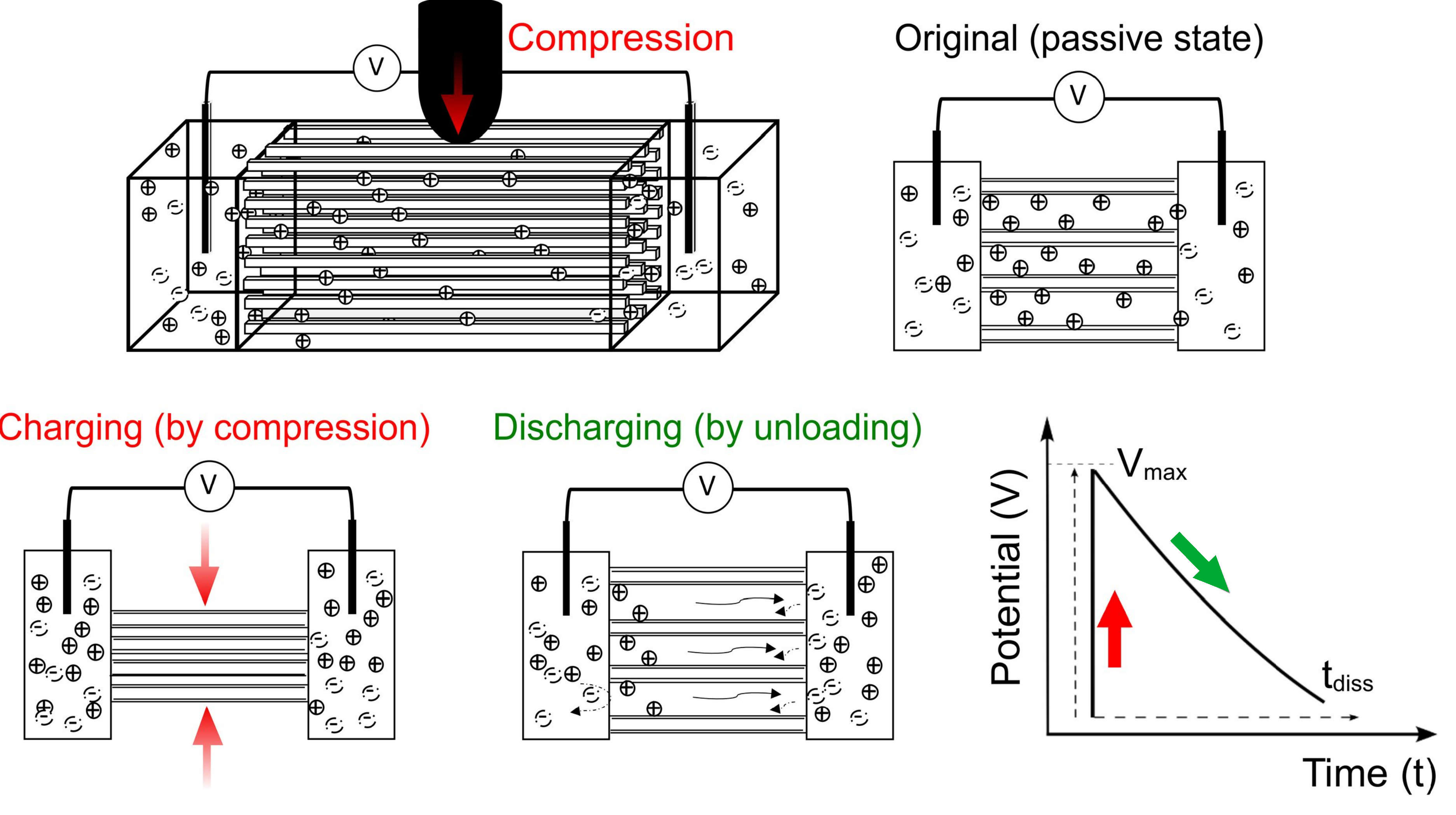
Nanofluidic voltage generator
A self-powered device comprising a plurality of nanochannels is presented, which is capable to generate an impressive voltage induced by mechanical load.
Challenge
Due to the natural limit of fossil fuels and the worldwide concerns in relation to energy consumption and negative climate changes, alternative energy sources are becoming increasingly important. Consequently, sustainable and self-powered energy systems, which for example exploit thermal, mechanical and solar energy from the environment, are increasingly playing a key role. Triboelectric nanogenerators (TENG) and piezoeletric nano-generators (PENG) are recognized mechanical generators. PENG can generate electrical charges and consequently electric current, when the materials change their polarization due to mechanical deformation. TENG produce charges on the surface of triboelectric materials, generating an electric current when the materials are physically separated. Fast response voltages of TENG and PENG caused by mechanical deformation result in a transient jump in the voltage-time line, which may be advantageous for wearable sensors. However, this is rather disadvantageous for energy collectors and batteries, since for such systems a fast charging in combination with a slow and robust discharge process is desired.
Our Solution
Scientists from the Georg-August-University of Göttingen have developed an outstanding self-powered device, which is composed of a plurality of nanochannels extending between two electrolyte reservoirs in the channel main direction. The channel walls comprise at least one kind of charged functional groups with a concentration, which is designed to gradually increase in the channel main direction. The nanochannel width is ranged from nanometers to a maximum of 1 µm, while the nanochannel length between the reservoirs can be designed in the range from millimeters to meters. The channel wall material can be selected from a group consisting of cellulose (preferably lignocellulose), other wood-based materials than lignocellulose, rubber, polymers, glass, carbon and metal. The electrolyte includes negatively charged anions and positively charged cations, while electrodes are coupled to both electrolyte reservoirs. A compression device can temporarily subject the nanochannels to a compression in a least one transverse direction. Nanochannel compression leads to voltage generation, while system discharging is induced by mechanical unloading. The nanochannel wall material is elastically deformable, which allows for an elastic compression of the nanochannels. Operation temperatures in the range of room temperature, as well as below (even in the negative temperature range) and above room temperature, are possible.
 Schematic illustration of the operation of the voltage generator according to the present invention and patent application (source: Prof. Zhang and Dr. Chen, Georg-August-University Göttingen Public Law Foundation).
Schematic illustration of the operation of the voltage generator according to the present invention and patent application (source: Prof. Zhang and Dr. Chen, Georg-August-University Göttingen Public Law Foundation).
Advantages
- Self-powered system operation
- Design with sustainable materials possible
- Reproducible voltage generation in combination with stable and robust discharging characteristics
- Remarkable material cycling performance in combination with tailored electrical properties
Applications
- Wearable and mobile electronics
- Batteries
- Supercapacitors
Development Status
The technology is efficient and reproducible on laboratory scale. System scale-up in development.
Patent Status
European patent application: EP24168308.5
Contact
Dr. Mirza Mackovic
Patent & Innovation Manager Technology
E-Mail: Diese E-Mail-Adresse ist vor Spambots geschützt! Zur Anzeige muss JavaScript eingeschaltet sein!
Tel.: +49 551 30724 153
Reference: CPA-2519-SUG
Tags: Nanotechnologie, Physik und Technik & Software, Holztechnologie und Forst
